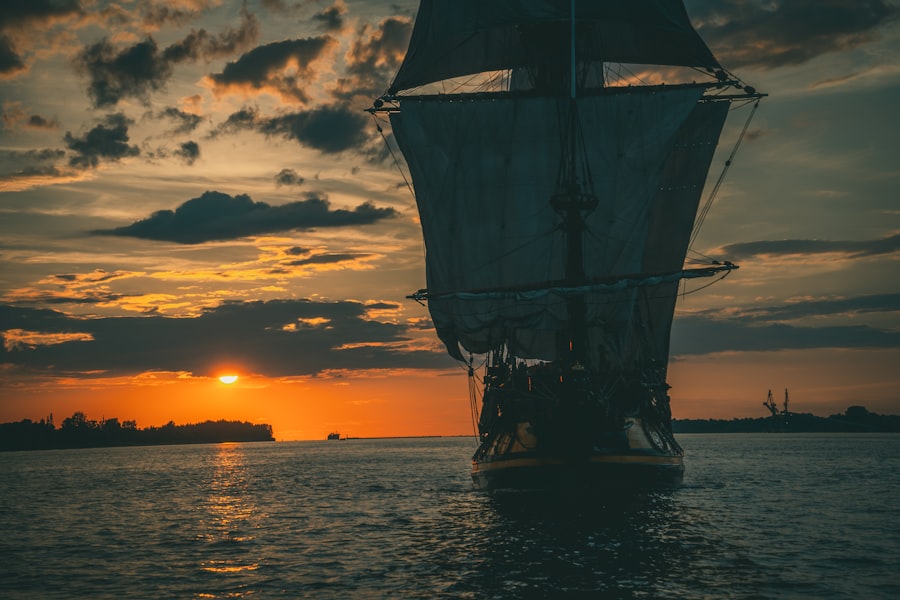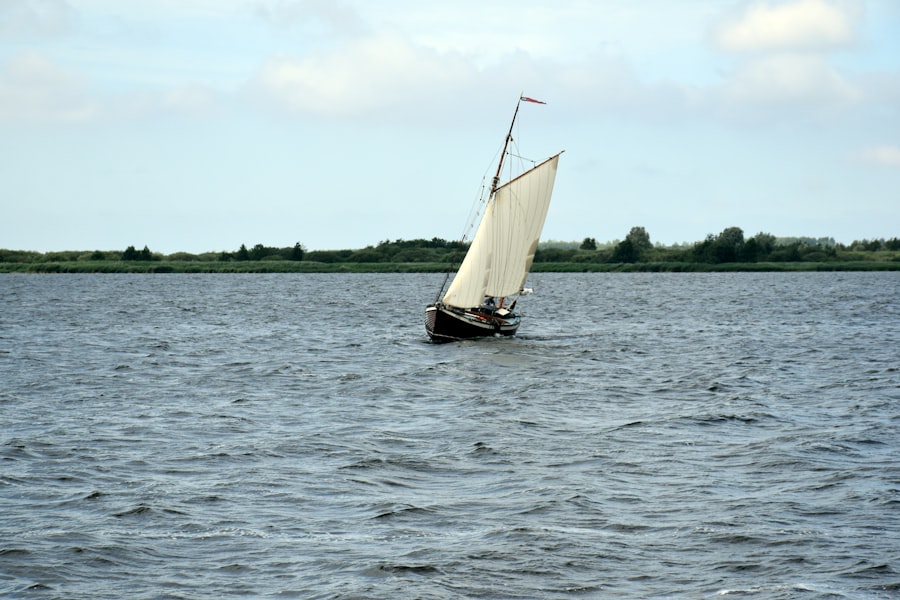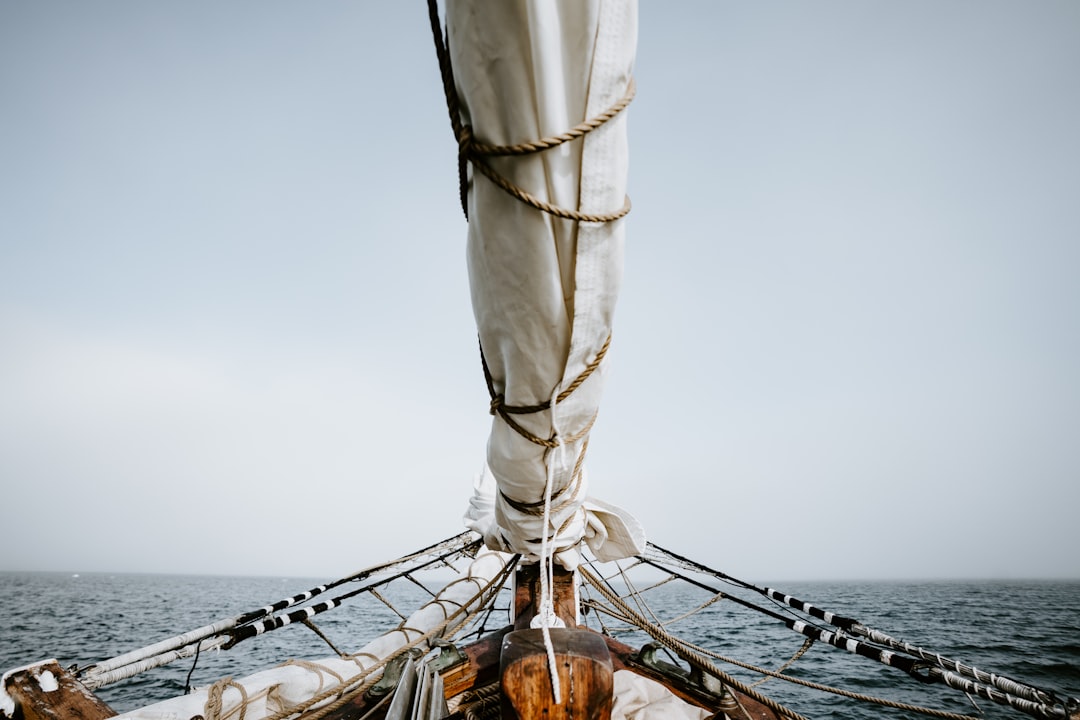Sir Francis Drake stands as one of the most prominent figures in the annals of maritime history. Born in the late 16th century, he emerged as a formidable navigator, explorer, and privateer whose exploits would leave an indelible mark on the age of exploration. His daring voyages across uncharted waters not only expanded the geographical knowledge of his time but also played a crucial role in the burgeoning power of England on the global stage.
Drake’s legacy is multifaceted, encompassing his contributions to naval warfare, exploration, and even the early foundations of British imperialism. Drake’s life was characterized by a relentless pursuit of adventure and discovery. He was not merely a sailor; he was a pioneer who challenged the limits of the known world.
His expeditions were marked by both triumph and peril, reflecting the spirit of an era defined by exploration and conquest. As one delves into the life and achievements of Sir Francis Drake, it becomes evident that his influence extends far beyond his time, shaping the course of history in ways that continue to resonate today.
Key Takeaways
- Sir Francis Drake was a renowned English explorer and naval captain known for his circumnavigation of the globe and his role in the defeat of the Spanish Armada.
- Drake’s early life and career were marked by his involvement in the slave trade, privateering, and his participation in the successful circumnavigation of the world.
- The discovery of the Drake Passage, a treacherous sea route connecting the Atlantic and Pacific Oceans, was a significant achievement in Drake’s exploration of the New World.
- The Drake Passage presented numerous challenges and dangers to sailors, including extreme weather conditions, strong winds, and icy waters.
- Drake’s legacy as an explorer and navigator continues to influence modern expeditions through the Drake Passage, and he is honored with memorials and landmarks around the world.
Early Life and Career
Born around 1540 in Tavistock, Devon, England, Francis Drake was the son of a farmer and grew up in a modest household. His early life was steeped in the maritime culture of the English coast, which would later serve as a foundation for his illustrious career. At a young age, he was apprenticed to a merchant seaman, where he honed his skills in navigation and seamanship.
This formative experience ignited a passion for the sea that would propel him into a life of exploration and adventure. Drake’s early career was marked by his involvement in various trading ventures, particularly in the lucrative slave trade. His initial forays into the Atlantic Ocean laid the groundwork for his later exploits.
By the time he reached adulthood, he had gained valuable experience and knowledge of maritime routes, which would prove instrumental in his future endeavors. His reputation as a skilled navigator began to grow, and he soon caught the attention of influential figures in England, including Sir John Hawkins, who would become a mentor and collaborator in Drake’s subsequent voyages.
The Voyage to the Pacific

In 1577, Sir Francis Drake embarked on one of his most ambitious undertakings: a circumnavigation of the globe. Commissioned by Queen Elizabeth I, this voyage aimed to explore new territories and challenge Spanish dominance in the Americas. Drake set sail with five ships, but only one, the Golden Hind, would ultimately complete the journey.
This expedition was not merely an act of exploration; it was also a calculated move to disrupt Spanish trade routes and assert English presence in the Pacific. The voyage took Drake through treacherous waters and uncharted territories. He navigated the Strait of Magellan, a narrow passage that connects the Atlantic and Pacific Oceans, showcasing his exceptional skills as a navigator.
Once in the Pacific, Drake’s encounters with indigenous peoples and his exploration of the coastlines of present-day California and Oregon marked significant milestones in European exploration. His journey was fraught with challenges, yet it underscored his determination to push beyond known boundaries and claim new lands for England.
The Discovery of the Drake Passage
| Year | Expedition | Significance |
|---|---|---|
| 1578 | Francis Drake | First Englishman to navigate the passage |
| 1616 | Willem Schouten and Jacob le Maire | First to successfully pass through the passage |
| 1839 | Charles Darwin | Contributed to the understanding of the passage’s significance in ocean currents |
One of Drake’s most notable achievements during his voyage was his discovery of what would later be named the Drake Passage.
While navigating this perilous stretch, Drake encountered fierce storms that tested both his ship and crew.
Despite these challenges, he successfully charted a course through these treacherous waters, demonstrating remarkable seamanship and resilience. The significance of the Drake Passage extends beyond its geographical features; it became a critical route for future explorers and navigators seeking to traverse between the Atlantic and Pacific Oceans. Drake’s successful navigation through this passage not only solidified his reputation as an exceptional mariner but also opened new avenues for exploration and trade.
The passage would later become a vital route for whalers, explorers, and traders alike, further cementing Drake’s legacy as a pioneer of maritime exploration.
Challenges and Dangers of the Passage
Navigating the Drake Passage was fraught with peril, presenting numerous challenges that tested even the most seasoned sailors. The region is notorious for its rough seas, strong currents, and unpredictable weather patterns. Drake’s expedition faced relentless storms that threatened to capsize his ship and crew.
The combination of high winds and towering waves created an environment where survival was uncertain, demanding unwavering courage and skill from all aboard. Moreover, the passage posed significant logistical challenges. The cold waters surrounding Antarctica were inhospitable, making it difficult to maintain supplies and provisions for the crew.
The harsh conditions took a toll on both physical health and morale. Yet, despite these adversities, Drake’s leadership shone through as he navigated through these treacherous waters with determination and ingenuity. His ability to adapt to changing circumstances ultimately allowed him to emerge victorious from this daunting journey.
Impact of the Drake Passage on Exploration

The successful navigation of the Drake Passage had profound implications for future exploration endeavors. It established a crucial maritime route that would facilitate trade and exploration between Europe and the Pacific Rim. Following Drake’s voyage, other explorers were inspired to venture into these uncharted waters, leading to further discoveries and mapping of new territories.
The passage became synonymous with adventure and exploration, drawing countless mariners eager to follow in Drake’s footsteps. Additionally, Drake’s journey through the passage contributed to a growing understanding of global geography during an era when maps were often incomplete or inaccurate. His detailed accounts of the regions he explored provided valuable insights for future navigators and cartographers.
The knowledge gained from his expedition laid the groundwork for subsequent voyages that would expand European influence across the globe, ultimately shaping international trade routes and colonial ambitions.
Legacy of Sir Francis Drake
Sir Francis Drake’s legacy is multifaceted, encompassing not only his achievements as an explorer but also his role as a naval commander and privateer. He is often celebrated as one of England’s greatest maritime heroes, having played a pivotal role in defending England against Spanish aggression during the late 16th century. His successful raids on Spanish ships and settlements earned him both fame and fortune while simultaneously bolstering England’s naval power.
Drake’s contributions to exploration are equally significant. His circumnavigation of the globe marked a turning point in maritime history, inspiring generations of explorers to seek new horizons. His name became synonymous with adventure and discovery, embodying the spirit of an age defined by exploration.
Today, he is remembered not only for his daring exploits but also for his impact on shaping England’s identity as a global maritime power.
Controversies and Criticisms
Despite his celebrated status, Sir Francis Drake’s legacy is not without controversy. His involvement in privateering raised ethical questions about piracy and colonialism during an era when European powers were vying for dominance over newly discovered lands. Critics argue that his actions contributed to violence against indigenous populations and fueled conflicts between European nations.
Furthermore, some historians have scrutinized Drake’s methods during his expeditions, questioning whether his aggressive tactics were justified or merely acts of opportunism disguised as exploration. The complexities surrounding his legacy highlight the moral ambiguities inherent in colonial endeavors during this period. While he is often hailed as a hero in English history, perspectives on his actions vary widely depending on cultural context and historical interpretation.
Honors and Memorials
Sir Francis Drake’s contributions to exploration and naval warfare have been commemorated through various honors and memorials across England and beyond. Numerous statues and monuments have been erected in his honor, celebrating his achievements as an explorer and naval commander.
In addition to physical memorials, Drake’s name has been immortalized in various geographical features around the world. The Drake Passage itself serves as a constant reminder of his pioneering spirit and navigational prowess. Furthermore, numerous ships have borne his name throughout history, reflecting his enduring influence on maritime culture.
Modern Expeditions through the Drake Passage
Today, modern expeditions continue to traverse the Drake Passage, drawing adventurers and researchers eager to explore its unique marine environment. Cruise ships regularly navigate these waters en route to Antarctica, offering travelers an opportunity to experience firsthand the challenges faced by early explorers like Sir Francis Drake. These journeys serve not only as recreational adventures but also as platforms for scientific research focused on understanding climate change and its impact on polar ecosystems.
The passage remains a vital route for contemporary maritime activities, including research expeditions aimed at studying marine biodiversity and environmental changes in this fragile region. As explorers navigate these waters today, they carry forward Drake’s legacy while also grappling with contemporary issues related to conservation and sustainability.
Sir Francis Drake’s Enduring Influence
Sir Francis Drake’s life and achievements continue to resonate through history as a symbol of exploration, courage, and ambition. His daring voyages across uncharted waters not only expanded geographical knowledge but also laid the groundwork for future generations of explorers seeking new horizons. While controversies surround aspects of his legacy, there is no denying that he played a pivotal role in shaping England’s maritime identity during an era defined by competition among European powers.
As modern explorers navigate the same waters that once challenged Drake’s crew, they are reminded of his enduring influence on maritime exploration. His spirit of adventure continues to inspire those who seek to push boundaries and discover new frontiers in an ever-changing world. Ultimately, Sir Francis Drake remains an iconic figure whose contributions to exploration will be remembered for centuries to come.
The Drake Passage, a treacherous stretch of water between the southern tip of South America and Antarctica, was first successfully navigated by the English privateer Sir Francis Drake in the late 16th century. This monumental achievement opened new routes for exploration and trade, marking a significant moment in maritime history. For more insights into the challenges and triumphs of early explorers like Drake, you can read a related article on the topic by visiting this page.
WATCH NOW! Drake Passage: Earth’s Deadliest Waters Revealed
FAQs
What is the Drake Passage?
The Drake Passage is the body of water between the southern tip of South America and the northern tip of the Antarctic Peninsula. It is known for its rough seas and challenging sailing conditions.
Who first sailed the Drake Passage?
The first recorded crossing of the Drake Passage was by the English privateer Sir Francis Drake in 1578. He was the first to navigate the treacherous waters and successfully complete the journey.
Why is the Drake Passage significant?
The Drake Passage is significant because it is the shortest and most direct route between the Atlantic and Pacific Oceans in the Southern Hemisphere. It is also a critical part of the global circulation of ocean currents.
What are the sailing conditions like in the Drake Passage?
The Drake Passage is known for its rough seas, strong winds, and unpredictable weather. Sailing through the passage can be challenging and requires careful navigation and preparation.
How long does it take to sail the Drake Passage?
The time it takes to sail the Drake Passage can vary depending on the specific route, weather conditions, and the type of vessel. Generally, it can take anywhere from a few days to a week to cross the passage.
